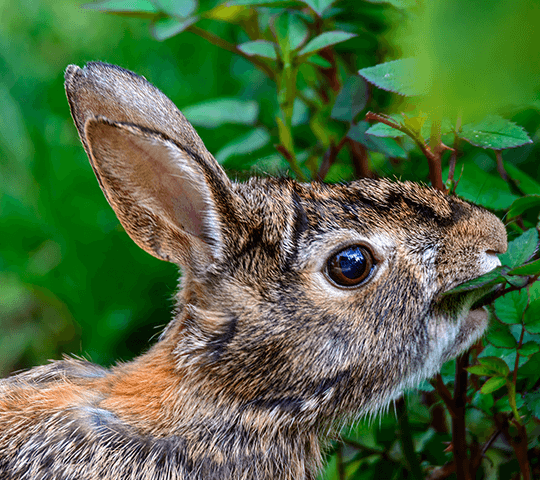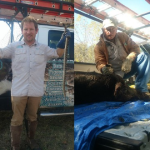Many people have a special fondness for rabbits. Intrinsically cute creatures who are often favorite characters from our childhood stories, rabbits can nevertheless be incredibly destructive to your property.
In North America, common species of rabbits include the brush rabbit, the eastern cottontail and the desert cottontail. Take note that black-tailed and white-tailed jackrabbits are hairs, not rabbits.
Delightfully hoppy, yet deceptively destructive. Rabbits, while endearing and iconic in children's literature, can sometimes become a hassle for homeowners and businesses. The same little creature that reminds us of storybook tales can also dig up your garden or nibble on your prized plants.
Appearance
General Characteristics
Rabbits are quadrupedal mammals, known for their long ears, fluffy tails, and powerful hind legs. Their fur can be soft and dense, which helps them to adapt to various environmental conditions.
Coloration/Patterns/Distinctive Markings
Most rabbits are brown, grey, or white, though there are variations depending on species and genetics. Some might exhibit patterns or spots, while others could be a solid color. Albino rabbits, characterized by their white fur and red eyes, are also common.
Size/Features
Rabbits can vary in size from the tiny pygmy rabbit to the larger European rabbit. They typically range from 2 to 20 pounds, with a length between 8 and 20 inches, excluding their tail.
Biology
Digestion and Diet
Rabbits are herbivores, primarily feasting on a diet of grasses, forbs, and leafy weeds. They have a unique digestive system which allows them to consume large amounts of plant material quickly and then digest it later in a safe location, through a process called cecotrophy.
Reproduction
Rabbits are prolific breeders. They can begin reproducing as early as 3 months old and can have multiple litters in a year, with each litter ranging from 3 to 7 young ones. This rapid rate of reproduction can lead to overpopulation issues in certain areas.
Unique Sensory Systems
A rabbit's large ears aren’t just for show. They help in detecting predators from far away. Rabbits also have a wide field of vision, with the exception of a small blind spot in front of their nose and under their chin.
Habitat
Preferred Environments
Rabbits prefer environments that offer plenty of cover from predators, such as brushy fence lines, tall grasses, woods, and thickets. They also establish burrows or use naturally occurring shelters to hide and reproduce.
Urban Encounters
With urban sprawl, rabbits have adapted to life in towns and cities. You might find them in parks, gardens, and yards. While they might seem harmless, their burrowing and feeding habits can lead to conflicts with humans.
Temperature Regulation
Rabbits are quite adaptable to temperature changes. Their dense fur provides insulation during colder months, and they stay cool in the summer by burrowing into the ground and resting during the hottest parts of the day.
Behavior
Defensive Mechanisms
When threatened, rabbits typically rely on their speed and agility to escape. They can dart quickly in unpredictable directions to evade predators.
Hunting Techniques
While rabbits don't "hunt" in the traditional sense, they are expert foragers. They tend to graze during the cooler parts of the day, often at dawn and dusk.
Damage/Problems
Rabbit Infestations
Rabbits can overrun gardens, chew on ornamental plants, and undermine structures with their burrowing. An overpopulation of rabbits can quickly turn a lush yard into a wasteland.
Trapping & Removal
Safe Handling
Handling a wild rabbit requires care to avoid injury to both the handler and the animal. Professional assistance is often needed to ensure the safety of all involved.
Relocation
Relocating rabbits is a preferred humane solution to overpopulation issues. It's essential to move them to an appropriate environment where they can thrive without causing problems for humans.
Deterrence
Property Maintenance
Keeping your property clear of excessive vegetation and eliminating brush piles can reduce its attractiveness to rabbits.
Physical Barriers
Fencing, especially chicken wire or mesh buried at least a foot deep, can deter rabbits from accessing gardens or other areas.
Educational Outreach
Understanding rabbits, their behavior, and their needs can lead to a harmonious coexistence. Sharing this knowledge within communities can prevent future conflicts.
When rabbits become a problem, AAAC Wildlife Removal can help. We offer expert removal, relocation, and deterrent solutions to ensure that both humans and rabbits can coexist peacefully in our shared environment. Don't let the little hoppers drive you hopping mad. Let us handle it!



















































